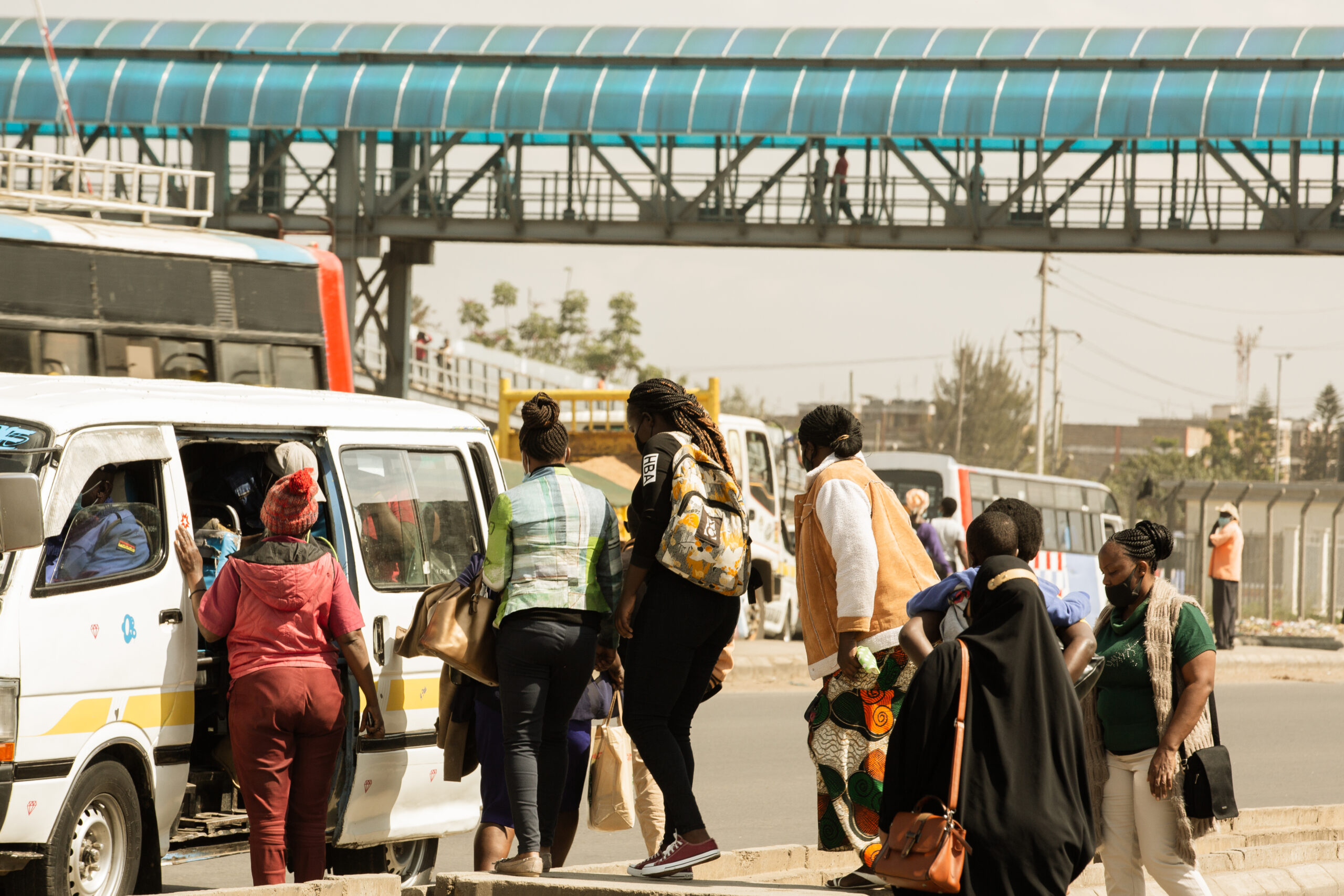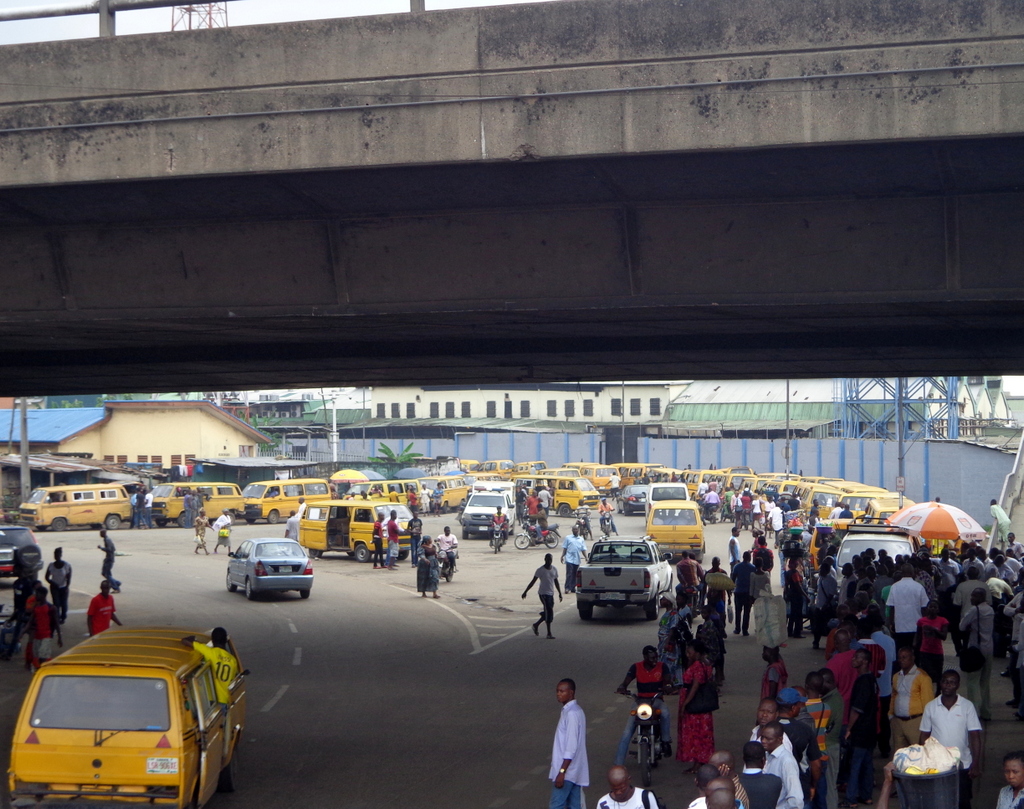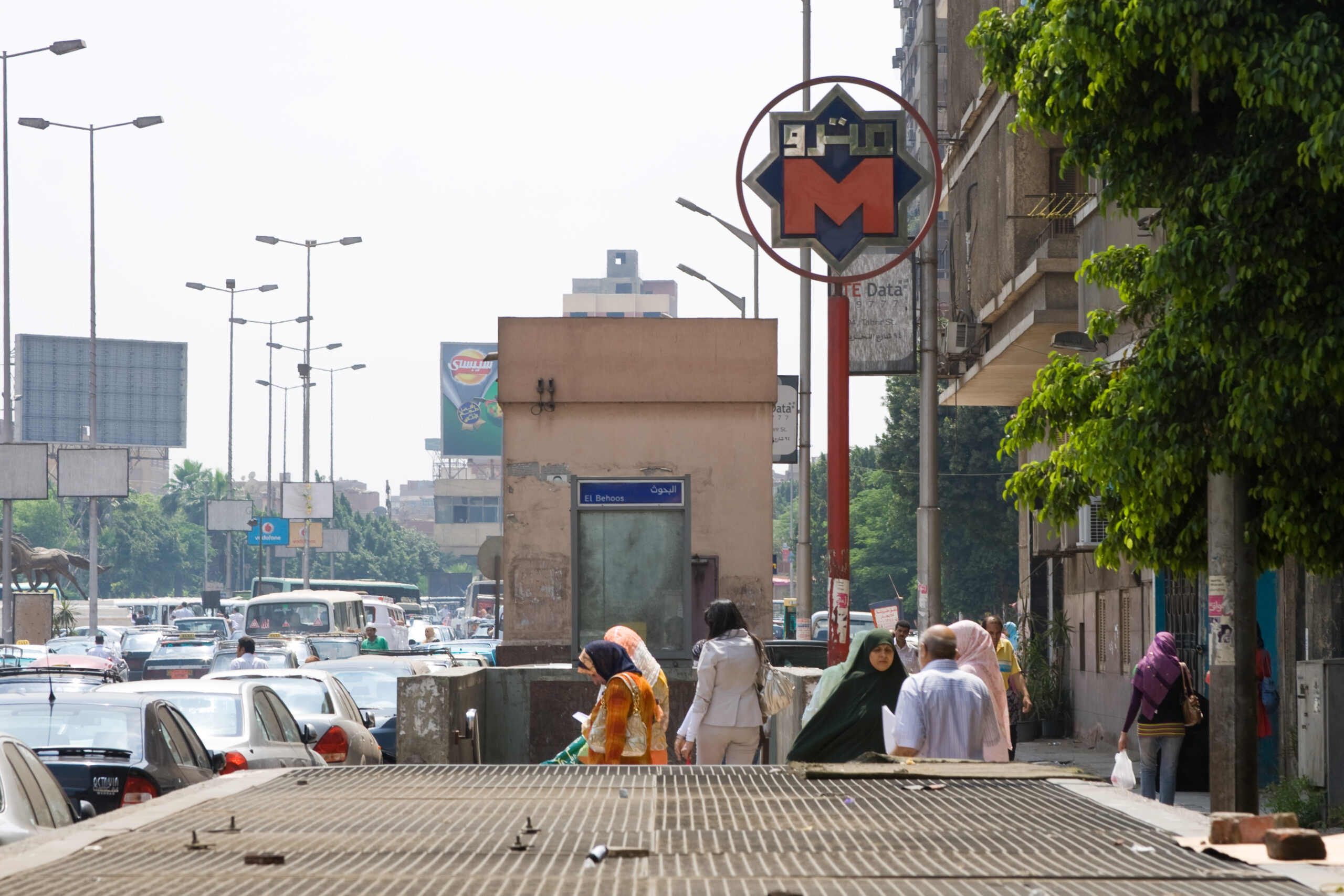
For a woman living in an African city, public transport can be a daunting experience. Women usually plan their trips in advance, and consider a multitude of factors before setting out: What is the safest way to reach the bus stop? What is the safest time to travel? Will I be able to take my child with me? Will I be able to walk home alone in the dark?
From the moment women board a minibus, tuktuk or bus, they are immediately confronted with an added series of challenges – they may find themselves in overcrowded buses and trains, trapped in a sea of commuters and sharing personal space with strangers, some of whom may grope or harass them. If they manage to reach their destination without incident, they will often have to navigate poorly lit, unsafe and unmaintained streets, exposing themselves to the risk of robbery or assault.
Despite progress made in promoting women’s urban mobility by initiatives like TUMI’s annual “Women Mobilize Women” Conference – which advocates for enhanced gender equity – women and girls have unmet needs in terms of safety and access that hinder their economic empowerment. On International Women’s Day 2024, under the theme “Count Her In: Accelerating Gender Equality Through Economic Empowerment,” we are shedding light on the challenges women face in urban mobility and how neglecting women’s needs for safety and access perpetuates barriers that hinder their full participation in the economy.
In this blog, we aim to sensitize urban and mobility planners to the challenges women face when traveling and advocate for the development of better designs and policies that make transport safer for all. Below, we delve into the specific obstacles women encounter, explore why current mobility systems fail to provide the necessary safety measures and access, and propose actionable steps to create a more inclusive and empowering transportation environment, with a particular focus on public transport.
The Hidden Toll of Unsafe Public Transport on Women and Girls in Africa
Women’s mobility is not just a problem for women: It has far-reaching implications for our political systems, economic growth and the well-being of generations to come. Alarming statistics from cities like Kampala, Uganda, and Nairobi, Kenya, highlight the prevalence of harassment and violence that women face while using public transport. For example, more than 80% of surveyed women said they experienced sexual harassment on public transport. Safety, security and accessibility remain major concerns for women in most African cities. A recent study by WhereIsMyTransport in three African cities (Nairobi, Kenya; Lagos, Nigeria, and Gauteng, South Africa) found that unaffordability, long wait times, overcrowding and inadequate safety measures are also major concerns that contribute to the risk of harassment.

Unsafe public transport not only limits the rights and freedom of women and girls but also hinders their access to education, employment and other opportunities. Since transport is not planned around women’s needs, it is often unavailable when they need it most. According to SuM4All, limited access to safe and reliable transport in developing countries is estimated to reduce women’s participation in the labor market by 16.5%.
Unveiling Overlooked Realities
Women’s transport issues have gained increasing attention globally, but there remains a significant lack of evidence and localized data from sub-Saharan African cities. Transport data in the region is generally scarce, of poor quality, inaccessible and largely quantitative, lacking disaggregation. This data deficiency hampers the development of effective and sustainable solutions that address the specific challenges women face in accessing public transport. Bridging the gap between data and solutions requires connecting grassroots initiatives with larger government-led policies and projects. At WRI, we prioritize strengthening grassroots efforts and mapping transit services to enhance mobility solutions.
Urban and mobility planners in Africa encounter several different obstacles when attempting to address the safety and accessibility concerns of women and girls in public transport, including:
- Data gaps: Insufficient, gender-disaggregated data collection presents a barrier for planners trying to understand and tackle the unique challenges women and girls encounter in public transport.
- Policy implications: The absence of comprehensive data on women’s safety in public transport impedes the development of targeted policies and regulations. Decision-makers may not fully grasp the urgency of addressing women’s safety concerns if they are unaware of the extent of the problem.
- Limited political will: Mobility planners and policymakers often prioritize technical aspects of planning like infrastructure development, rolling stock or traffic management while neglecting the social dimensions and gender equality considerations in transport systems. This limited political will hinders the prioritization of women’s safety and accessibility in public transport planning.
- Inadequate infrastructure: Insufficiently lit streets, inadequate footpaths and poorly maintained transport facilities contribute to an unsafe environment that disproportionately affects women. Inadequate lighting restricts women’s freedom of movement due to fear of theft, harassment or assault.
- Public space and women’s safety design: Social norms and their impact on public space design, coupled with gender inequality and discrimination prevalent in many African communities, pose significant barriers to prioritizing the concerns of women and girls in public transport planning. Designing public spaces that prioritize women’s safety and address gender-specific concerns is vital for creating inclusive and secure transportation environments.
What Can African Cities Learn from Other Cities?
Cities around the world have made significant gains in making streets and public transport safer for women. Some of the solutions developing countries have implemented in recent years include:
Enhancing Physical Infrastructure
In Maltepe, Istanbul, the TOPUK project (which stands for “Women Accessing Public Transport,” with TOPUK meaning heel in Turkish) used participatory methods to address safety concerns by engaging the community at every step. Through vibrant workshops and collaborative design sessions, residents collectively identified and tackled women’s challenges in public transport, resulting in transformative changes such as wider sidewalks, inviting benches and revitalized green spaces. The project gained significant support and recognition from the Maltepe Municipality staff who observed the struggles faced by women and facilitated a smoother approval process. With the unwavering commitment of key stakeholders, including the Istanbul Metropolitan Municipality and WRI Türkiye, the project successfully improved accessibility and enhanced the quality of life for the entire community.
In Zapopan, Mexico, enhancing walking and cycling infrastructure has significantly improved mobility for women. The implementation of the “Emergent Bike Lane” project exemplifies this approach by aiming to improve cycling infrastructure and encourage the use of bicycles as a viable transportation option. This initiative has resulted in a remarkable increase in the number of women using bikes, with 10% of total cyclist trips now being made by women. This outcome highlights the positive impact of cycling infrastructure on women’s mobility and emphasizes its potential to support first and last mile connections, demonstrating the importance of inclusive and interconnected transportation systems that prioritize gender equity and accessibility.
Technology-based Reporting Systems
In Fortaleza, Brazil, an effort to fight sexual harassment and violence against women on public transport launched Nina, an app-based reporting system that allows passengers to report incidents of sexual harassment and violence on public transport. Nina uses geolocation technology to identify users’ location and when an incident occurs, offers to report the incident, with an added option to report anonymously. For example, when someone reports an act of harassment or witnesses harassment, bus security cameras will automatically record the images and send them to the civil police. This seamless transfer of recorded images empowers authorities to conduct thorough follow-up investigations and effectively identify the suspects involved in the incidents.
Lessons from Cairo’s Women-Only Carriages
Cairo’s women-only carriages revolutionized urban transport by sparking transformative change in gender dynamics. Despite concerns about potential divisions and impacts on inclusivity, this intervention shattered taboos surrounding gender discrimination and sexual assault in African cities. Symbolizing progress, these carriages serve as a catalyst for inclusive urban development, offering women a safe and comfortable commuting experience. By encouraging public engagement, addressing safety concerns and fostering inclusivity, Cairo’s example paves the way for other cities to empower women and create safer transportation systems. This visionary approach has the potential to transform societal relationships and inspire cities across Africa to prioritize women’s safety and access to public transport.

However, it is important to recognize that although these initiatives have been implemented, there is always room for improvement and further action. Measures like apps, CCTV cameras and dedicated carriages for women can provide assistance but cannot entirely solve women’s mobility concerns in cities. It is important to note that these initiatives address local, context-specific challenges and cannot serve as “copy and paste” ready solutions for all African cities.
How To Build Gender-Responsive Public Transport Systems
Cities worldwide, including vibrant African metropolises such as Cairo, are embracing pilot solutions to enhance women’s mobility. Vienna’s “Manual for Gender Mainstreaming” and Barcelona’s “Plan for Gender Justice” exemplify comprehensive approaches to gender-inclusive urban planning. Other cities like Delhi, India; Jakarta, Indonesia; Kuala Lumpur, Malaysia; City of Manila, Philippines and Tokyo, Japan, have also introduced women-only public transportation options. While progress is being made, African cities have yet to initiate conversations and actions.
Urban planners must capitalize on the momentum and address this issue holistically. As pilot solutions are rolled out, cities must also consider how local solutions can be scaled effectively. Below, we outline a systematic process that can pave the way for scalable mobility solutions, empowering women and creating inclusive cities:
1. Build a diverse team. Assemble a team with diverse backgrounds and perspectives to challenge the status quo effectively. This ensures different needs and perspectives are considered at every stage of the project.
2. Garner political support. Before embarking on a project, secure strong political buy-in. This ensures that the project’s outcomes are considered in future urban and transportation plans, promoting long-term impact.
3. Define the project scope. Identify knowns and unknowns to determine the project’s scope. Focus on areas that will bring the most impact, such as specific routes and destinations where women face transportation challenges.
4. Map existing transportation solutions. Create initial data using existing data standards and specifications. For example, General Transit Feed Specification (GTFS) can be used to map public transport routes, GTFS-Flex can be used to map some informal transport routes, and General Bikeshare Feed Specification (GBFS) can be used to map active and shared mobility solutions. These digital data solutions can play a vital role in enabling real-time tracking, reducing anxiety and uncertainty regarding transport schedules.
5. Collect gender-disaggregated data. Enhance the initial mapping with gender-disaggregated data through surveys or other methods. This provides valuable insights into women’s mobility patterns, enabling a more comprehensive understanding of the transportation system.
6. Train a local team. Build local teams that can produce and quality-check the data through open-source tools. Open-source tools are not only cost-effective but also foster community engagement, ensuring data can be maintained and updated in the future.
7. Share insights and data. Share your insights and data with stakeholders, including those outside your immediate circle. This knowledge-sharing fosters community engagement and collaboration towards improved public transportation. These challenges are not only for African cities: they are shared by all cities (for example, the controversy of women-only carriage in Cairo echoes the controversy in Tokyo).
8. Engage in dialogue/participatory processes. Keep the conversation going! A recent study conducted in three sub-Saharan African cities on sexual harassment highlighted widespread misunderstandings about what defines sexual harassment. To bridge these gaps and empower grassroots groups, it is crucial to foster gender-sensitive dialogue through inclusive participatory processes. Engage key stakeholders such as government officials, urban planners, community members and women from the project’s inception. By collectively identifying and analyzing the problems, designing and implementing solutions, and utilizing focus group discussions with beneficiaries, you can harness the power of storytelling and encourage women to share their travel experiences.
9. Promote use of technology-based tools. Innovative tools like mobile apps (Nina, Safetipin and Safecity, among others) can be helpful for reporting incidents of sexual harassment and violence on public transport.
10. Build accessibility for all. Accessibility of public transport services for women does not only benefit women: it benefits all travelers. Improving mobility services’ accessibility guarantees a better experience for all.
These proposed solutions serve as a guide; by following them, project owners lay the foundation for purposeful data collection and sharing that enables scalability across contexts.
—
While progress has been made, there is still much work to be done to ensure women’s safety and access to reliable mobility. Achieving change at scale requires a participatory approach that prioritizes women’s needs for safety and access within public transport systems and public spaces. Employing user-centered design processes when developing solutions is essential because women and girls face unique experiences, realities and risks that mobility planners must consider. Creating a more inclusive and equitable society for all hinges on thoroughly understanding and consistently integrating gendered needs throughout the mobility pipeline, from transportation infrastructure planning to local policies and urban planning practices.
Esthelyne Dusabe is Urban Mobility Project Specialist for WRI Africa.
Tu-Tho Thai is Project Manager & Expert Contributor for Information Technology for Public Transport (ITxPT).






